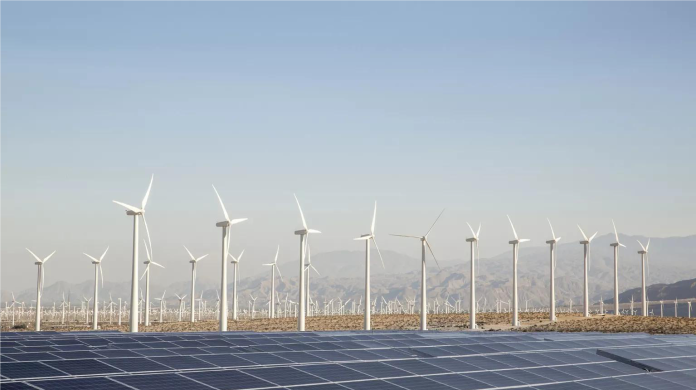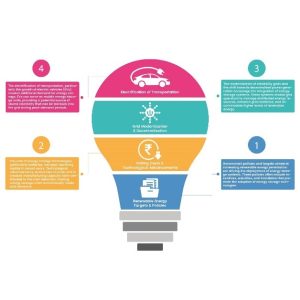The global transition to renewable energy sources is gaining momentum as countries strive to reduce carbon emissions, combat climate change, and achieve energy independence. In this transition, energy storage plays a vital role by addressing the intermittent nature of renewable energy generation and enabling a reliable and resilient power supply. As renewable energy technologies such as solar and wind power become increasingly prevalent, energy storage systems are emerging as a crucial component of the modern energy landscape.
Intermittency and the Need for Energy Storage:
Renewable energy sources such as solar and wind power are inherently intermittent, as their output depends on weather conditions and natural fluctuations. This intermittency poses challenges to the stability and reliability of electricity grids. Energy storage systems help bridge the gap between energy generation and demand, providing a solution to the variability of renewable energy sources.
Benefits of Energy Storage:
Grid Stability and Reliability:
Energy storage systems enhance the stability and reliability of electricity grids by balancing supply and demand fluctuations. Excess renewable energy generated during peak production periods can be stored in batteries or other storage technologies and released when demand exceeds supply. This ensures a continuous and reliable power supply, reducing the reliance on fossil fuel-based backup generation.
Integration of Renewable Energy:
Energy storage enables better integration of renewable energy into the grid by addressing the challenges posed by variable generation. It allows for the maximization of renewable energy utilization, minimizes curtailment, and enhances grid flexibility.
Peak Demand Management:
Energy storage systems help manage peak electricity demand by storing excess energy during low-demand periods and supplying it during high-demand periods. This helps reduce strain on the grid, avoids the need for costly infrastructure upgrades, and can lower electricity costs for consumers.
Ancillary Services:
Energy storage systems can provide ancillary services to the grid, including frequency regulation, voltage control, and reactive power support. These services improve grid stability and efficiency, reducing the need for traditional power plants to provide these services.
Types of Energy Storage Technologies:
Batteries:
Battery storage systems, such as lithium-ion batteries, are the most common form of energy storage. They offer high energy density, rapid response times, and scalability. Battery storage is widely deployed in residential, commercial, and utility-scale applications.
Pumped Hydro Storage:
Pumped hydro storage utilizes the potential energy of water by pumping it from a lower reservoir to a higher one during periods of low electricity demand. When electricity demand rises, the water is released from the upper reservoir, passing through turbines to generate electricity.
Thermal Energy Storage:
Thermal energy storage systems store heat or cold generated from renewable energy sources, such as concentrated solar power or geothermal energy. This stored thermal energy can be utilized for heating, cooling, or electricity generation.
Flywheel Energy Storage:
Flywheel energy storage systems store energy by spinning a rotor at high speeds. When electricity is needed, the energy stored in the rotating flywheel is converted back into electricity.
Policy and Market Drivers:
Renewable Energy Targets and Policies: Government policies and targets aimed at increasing renewable energy penetration are driving the deployment of energy storage systems. These policies often include incentives, subsidies, and mandates that promote the adoption of energy storage technologies.
Falling Costs and Technological Advancements: The cost of energy storage technologies, particularly batteries, has been declining rapidly in recent years. Technological advancements, economies of scale, and increased manufacturing capacity have contributed to this cost reduction, making energy storage more economically viable and attractive.
Grid Modernization and Decentralization: The modernization of electricity grids and the shift towards decentralized power generation encourage the integration of energy storage systems. These systems enable grid operators to manage distributed energy resources, enhance grid resilience, and accommodate higher levels of renewable energy.
Electrification of Transportation: The electrification of transportation, particularly the growth of electric vehicles (EVs), creates additional demand for energy storage. EVs can serve as mobile energy storage units, providing a potential source of stored electricity that can be fed back into the grid during peak demand periods.
Challenges and Opportunities:
Cost and Financing: Despite declining costs, energy storage technologies still require significant upfront investments. Developing innovative financing mechanisms and implementing supportive policies can help overcome this barrier and accelerate the deployment of energy storage systems.
Regulatory Frameworks:
The regulatory frameworks governing energy storage need to be updated to account for its unique characteristics. This includes addressing issues such as market access, pricing mechanisms, and grid connection requirements.
Technological Advancements:
Continued research and development efforts are needed to improve the efficiency, lifespan, and performance of energy storage technologies. Advancements in materials, manufacturing processes, and system integration can further drive down costs and enhance performance.
Environmental Impacts:
Energy storage systems, particularly those utilizing certain battery chemistries, can have environmental impacts associated with raw material extraction and disposal. Ensuring sustainable sourcing of materials and implementing effective recycling and disposal programs are essential for minimizing these impacts.
Conclusion:
Energy storage is a critical enabler in the transition to renewable energy. By addressing the intermittency of renewable energy sources, energy storage systems enhance grid stability, integrate renewable energy more effectively, and support the growth of decentralized and resilient power systems. Continued advancements in technology, supportive policies, and collaborative efforts among stakeholders will drive the widespread adoption of energy storage and accelerate the global transition to a sustainable and clean energy future.











